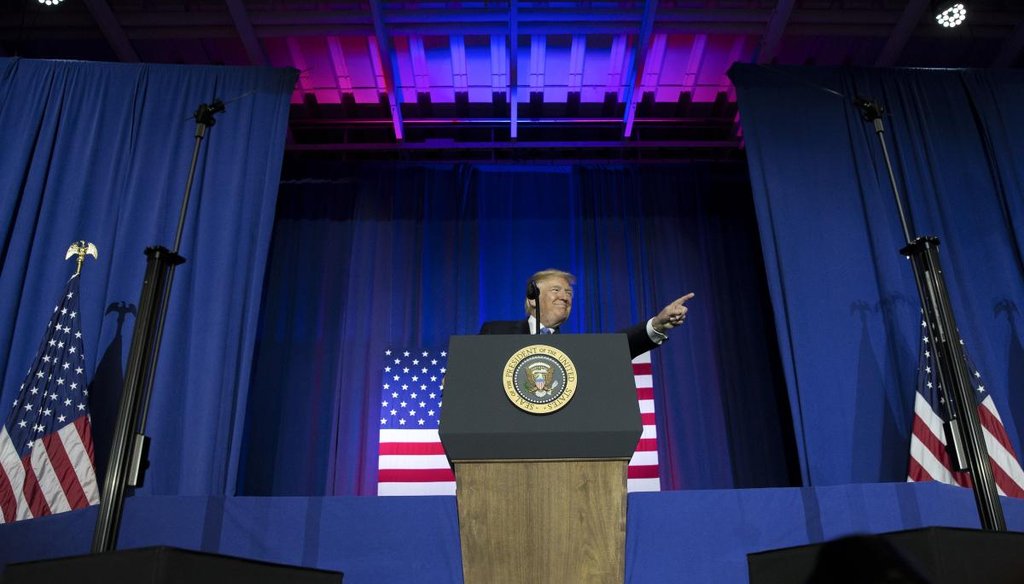Stand up for the facts!
Our only agenda is to publish the truth so you can be an informed participant in democracy.
We need your help.
I would like to contribute
Tax plan appears to favor wealthiest, no guarantee of cuts for all

President Donald Trump delivered an address about tax reform in the Farm Bureau Building at the Indiana State Fairgrounds in Indianapolis, Sept. 27, 2017. (New York Times)
President Donald Trump campaigned on a tax reform plan that made one thing clear: If elected, Americans would see smaller portions of their paychecks going to the federal government.
The day before the 2016 West Virginia Republican primary, Trump told CNN's Chris Cuomo, "Everybody is getting a tax cut, especially the middle class."
One caveat, Trump said, was that he might have to raise taxes on the wealthy. "I'm not going to allow it to be increased on the middle class," he added.
The Trump administration's 2017 tax legislation framework, released on Sept. 27, proposes deep rate cuts, fewer taxable income brackets, increases to the standard deduction and eliminating several tax breaks. Some details -- necessary to get an exact picture of how proposed legislation would affect each individual and household -- were not included in the plan, such as the thresholds for the income brackets.
However, by filling in the gaps with details from previous proposals by Trump and other Republican leaders, the Tax Policy Center was able to publish a preliminary analysis that projected initial across-the-board income tax decreases followed by increases on certain income levels within the next decade. By 2027, nearly 30 percent of individuals making between $50,000 and $150,000 and 60 percent of people making between $150,000 and $305,000 would see tax increases, the analysis found.
The center noted that the top 1 percent of earners would receive about 80 percent of the tax benefit. This income group would see its after-tax income increase 8.5 percent, whereas the bottom 95 percent of earners would see an average 1.2 percent increase.
Taxpayers with certain types of family and income characteristics could also see their taxes increase, partly due to the proposed elimination of state and local tax deductions. Treasury Secretary Steven Mnuchin said in an interview on ABC's This Week that committees working on the legislation are trying to figure out a way to prevent states such as California and New York from drastic federal tax hikes.
When asked whether he could guarantee that all middle class individuals will receive a tax cut, Mnuchin acknowledged that he could not.
Final details of the plan have yet to be determined, but early analysis shows that the current framework struggles to ensure tax cuts for everyone. It also appears to favor cuts for wealthier individuals and could increase taxes on some middle class groups. We'll see if the actual tax legislation falls in line with Trump's promise, but for now we rate this Stalled.
Our Sources
U.S. Treasury Department, 2017 tax code framework, Sept. 27, 2017
Tax Policy Center, "A Preliminary Analysis of the Unified Framework," Sept. 29, 2017
CNN, clip of Donald Trump interview with Chris Cuomo, May 9, 2016
ABC, Transcript of "This Week," Oct. 1, 2017